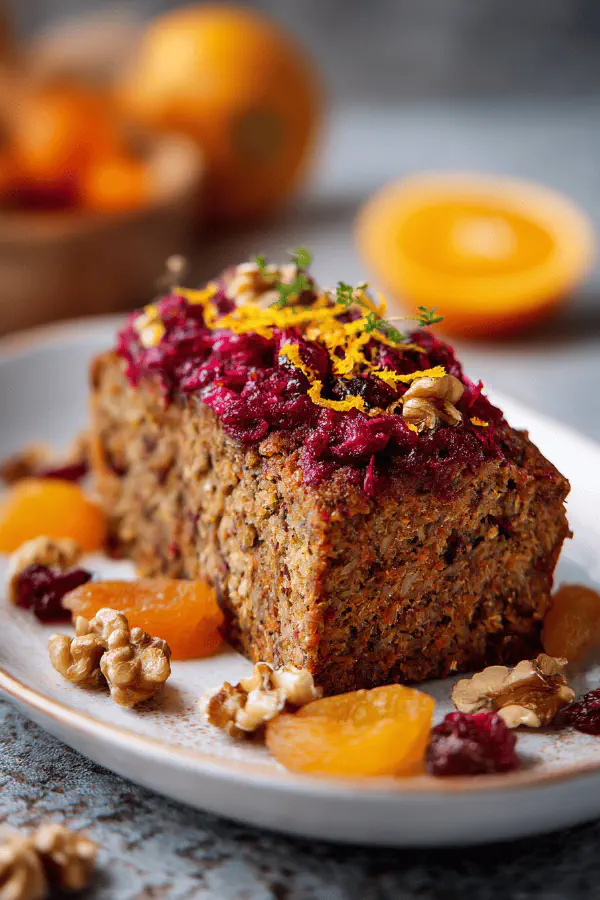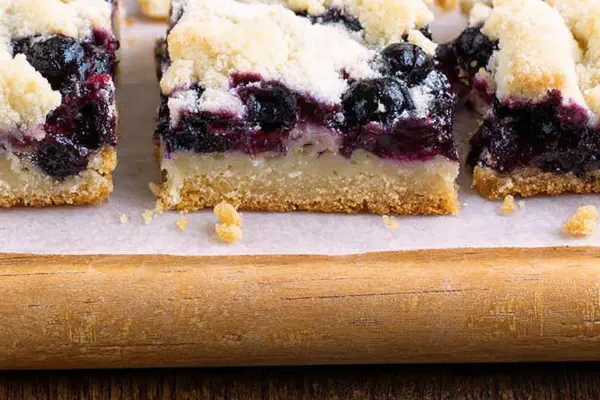Featured Recipe
Spiced Beet Cake with Orange Zest

By Kate
"
A spiced beet cake blending the earthiness of grated beets with a medley of fruits and nuts. Uses whole wheat flour and replaces some traditional baking agents with alternatives for texture and flavor balance. Enhanced with fresh orange zest and chopped dried apricots to cut through the richness. Moist crumb, aromatic with cinnamon and ginger. Delivering a tight crumb with a chewy, fruity bite. Takes around one hour in the oven with visual cues guiding doneness. Suitable for vegetarian and dairy-free diets. A dense but tender loaf cake with texture contrast and a hint of citrus brightness.
"
Prep:
40 min
Cook:
Total:
Serves:
12 servings
cake
vegetarian
baking
dessert
healthy
Introduction
Beets in baked goods is no accident. Their earthy sweetness and moisture hold crumb together, offering natural color and density without heaviness. Combine that with warming spices, nuts, and new fruit twists—dried apricots swap for dates, orange zest cuts the beet funk. No butter or dairy involved, but still tender and rich from oil and eggs. Whole wheat pastry flour gives subtle nuttiness and better structure than plain all-purpose flour. Expect a moist, dense cake with chewy bites from fruit and nuts. Baking this calls for patience and feel – timing less rigid, watch edges and check center doneness visually. A rustic loaf with deep aromas when it finally cools, a complex texture and sweet balance.
Ingredients
About the ingredients
Swapped all-purpose flour for whole wheat pastry flour — chose it for better nutrients and slightly nuttier flavor while keeping light. Dried apricots in place of dates—adds brightness and a chewy texture, balancing beet earthiness differently. Ground ginger replaced nutmeg for a warmer spice note that lifts up the cinnamon. Orange zest added last step—aromatic oils freshen cake, don’t omit citrus note, especially against earthy beets. Drain pineapple well, or excess moisture will make cake gummy. Walnuts give crunch; substitute pecans or almonds if desired—toast lightly for more aroma. Light brown sugar selected for subtle molasses depth; white sugar yields less moist crumb.
Method
Technique Tips
Grease and flour tube pan well—soaked batter with wet beets and fruit tends to stick in carvings easily. Mixing must be staged: dry ingredients separately, fruit nuts separately to avoid uneven clumping or crushing sensitive fruit. Beat sugar and oil fully until homogenous before eggs—traps air for crumb lift. Folding beets and dry ingredients gently prevents overworking batter—key for tender crumb. Layering ingredients in bowls keeps you organized and speeds incorporation. Bake at steady 175C; oven hot spots can make cake crust too dark before inside bakes; rotate pan halfway if needed. Use toothpick test; moist crumbs but no batter is perfect doneness. Let cake cool partially before unmolding—rushing breaks cake or sticks. Full cool enhances flavor and texture settling—slice cleanly with serrated knife to avoid tearing.
Chef's Notes
- 💡 Grease and flour bundt pan well, batter sticks easily. Pay attention to corners, avoid dry spots. Use coconut oil if desired; adds flavor.
- 💡 Drain pineapple thoroughly. Wet fruit leads to gummy texture. Use fine mesh, paper towels. Replace walnuts with pecans for a different crunch.
- 💡 Watch for batter texture after adding eggs. Should be creamy yet thick. If too runny, might indicate overbeating. Slower mixing helps.
- 💡 Baking time can vary. Check around 60 minutes. Look at edges pulling away from pan. Firm yet slightly collapsible surface indicates readiness.
- 💡 Cool cake on wire rack 15 minutes. Unmold gently, tap to release. Full cooling is key; structure firms up and flavors develop better.
Kitchen Wisdom
Can I use regular all-purpose flour?
Not recommended. Whole wheat pastry flour keeps it light. All-purpose changes texture and moisture balance.
Cake sinks in the center, what happened?
Overmixing is likely. Air bubbles collapse. Next time, fold gently and avoid too much beating.
How should I store leftovers?
Wrap in plastic or foil. Up to three days at room temp. Refrigerate if longer; might dry out, add moisture.
Can I swap dried apricots for other fruits?
Yes, try raisins or cranberries. Adjust moisture and sweetness accordingly, keep balance. Experiment freely.



